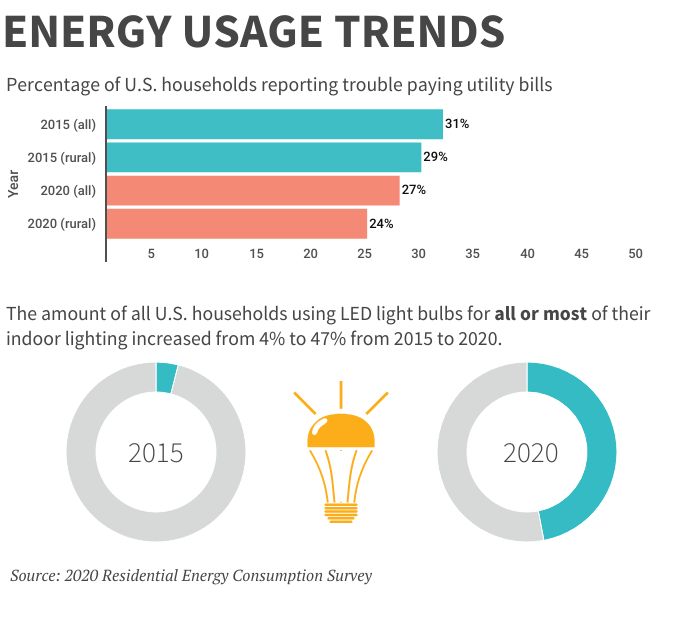A recently released survey of energy characteristics of urban and rural American households shows the extent of energy insecurity during the COVID-19 pandemic’s first year, with about 27% of households saying they struggled to pay utility bills.
The Energy Information Administration’s
2020 Residential Energy Consumption Survey collected data from nearly 18,500 households in late 2020 and early 2021, when many people were spending more time than usual at home due to the pandemic.
Among rural households, about 24% reported having trouble paying their utility bills, including about 18% who said they had to skimp on food and medicine to pay energy bills, and nearly 9% who received delinquent notices from their electric utilities.

However, the share of households that struggled to pay energy bills decreased from 2015, the last time the survey was conducted. In that survey, 31% of all households and 29% of rural households reported challenges in paying bills.
The survey also shed light on changes in household energy use amid technological advances.
“Looking at the 2020 RECS data in comparison to earlier surveys shows changes in what devices we used, what energy sources powered those devices, and even how we turned those devices on and controlled them,” said EIA Acting Administrator Steve Nalley. Takeaways from that survey included:
• Larger TVs were becoming the norm in 2020, with more than 70% of households reporting their most-used TV was 40 inches or greater, up from 58% in 2015.
• About 40 million households had smart speakers in 2020, nearly 18 million of which were used to control at least one setting in the home, such as lighting, temperature or security.
• LED bulbs were lighting nearly half of all households in 2020, up from 4% in the 2015 survey.
• More than three-quarters of electric vehicle owners said they charged their vehicles at home.
